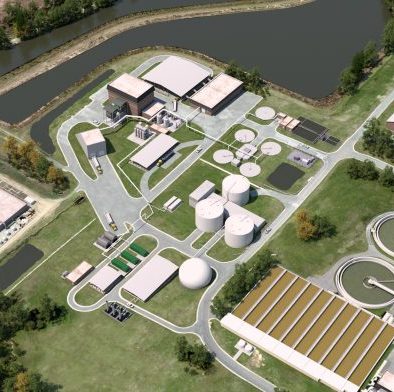WSSC is currently among the largest water and wastewater utilities in the nation, with a network of nearly 5,742 miles of fresh water pipeline and over 5,546 miles of sewer pipeline.
“The Piscataway Bio-Energy Project will save our customers more than $3 million per year and underscores our commitment to green energy,” said WSSC General Manager and CEO Carla A. Reid.
“WSSC has always been at the forefront of innovation and this transformative project continues our innovative spirit. Through cutting-edge technology, we will be able to recover vital resources from the wastewater treatment process and reduce our greenhouse gas emissions.”
The Bio-Energy Project will transform how WSSC handles biosolids — the nutrient-rich organic materials resulting from the wastewater treatment process — from five existing WSSC water resource recovery facilities (formerly known as wastewater treatment plants).
Using cutting-edge “green” technology, the new facility will significantly reduce the amount of biosolids left over from the treatment process, thus reducing costs to haul and dispose of the product.
The remaining biosolids will be significantly cleaner (Class A), making the disposal process much easier and allowing the final product to be sold and distributed as fertilizer. With cleaner Class A biosolids, WSSC will also save money by eliminating the use of lime, which is currently applied to Class B biosolids to control odour.
As an added benefit, the process to create the Class A biosolids will generate renewable energy to help run the plant. This new process produces methane gas, which will be captured to provide the Piscataway facility with a reliable power source that is completely off the grid. The new process will reduce WSSC’s greenhouse gas emissions by 15 percent.
The $44 million contract was awarded to PC Construction Company. Phase One services include design and early construction, which entails demolition of existing on-site facilities and relocation of existing utilities. Phase Two is expected to be awarded fall 2019. The entire project should be complete and operational in spring 2024.

